#data structures 101
Explore tagged Tumblr posts
Text
Master CUDA: For Machine Learning Engineers
New Post has been published on https://thedigitalinsider.com/master-cuda-for-machine-learning-engineers/
Master CUDA: For Machine Learning Engineers
CUDA for Machine Learning: Practical Applications
Structure of a CUDA C/C++ application, where the host (CPU) code manages the execution of parallel code on the device (GPU).
Now that we’ve covered the basics, let’s explore how CUDA can be applied to common machine learning tasks.
Matrix Multiplication
Matrix multiplication is a fundamental operation in many machine learning algorithms, particularly in neural networks. CUDA can significantly accelerate this operation. Here’s a simple implementation:
__global__ void matrixMulKernel(float *A, float *B, float *C, int N) int row = blockIdx.y * blockDim.y + threadIdx.y; int col = blockIdx.x * blockDim.x + threadIdx.x; float sum = 0.0f; if (row < N && col < N) for (int i = 0; i < N; i++) sum += A[row * N + i] * B[i * N + col]; C[row * N + col] = sum; // Host function to set up and launch the kernel void matrixMul(float *A, float *B, float *C, int N) dim3 threadsPerBlock(16, 16); dim3 numBlocks((N + threadsPerBlock.x - 1) / threadsPerBlock.x, (N + threadsPerBlock.y - 1) / threadsPerBlock.y); matrixMulKernelnumBlocks, threadsPerBlock(A, B, C, N);
This implementation divides the output matrix into blocks, with each thread computing one element of the result. While this basic version is already faster than a CPU implementation for large matrices, there’s room for optimization using shared memory and other techniques.
Convolution Operations
Convolutional Neural Networks (CNNs) rely heavily on convolution operations. CUDA can dramatically speed up these computations. Here’s a simplified 2D convolution kernel:
__global__ void convolution2DKernel(float *input, float *kernel, float *output, int inputWidth, int inputHeight, int kernelWidth, int kernelHeight) int x = blockIdx.x * blockDim.x + threadIdx.x; int y = blockIdx.y * blockDim.y + threadIdx.y; if (x < inputWidth && y < inputHeight) float sum = 0.0f; for (int ky = 0; ky < kernelHeight; ky++) for (int kx = 0; kx < kernelWidth; kx++) int inputX = x + kx - kernelWidth / 2; int inputY = y + ky - kernelHeight / 2; if (inputX >= 0 && inputX < inputWidth && inputY >= 0 && inputY < inputHeight) sum += input[inputY * inputWidth + inputX] * kernel[ky * kernelWidth + kx]; output[y * inputWidth + x] = sum;
This kernel performs a 2D convolution, with each thread computing one output pixel. In practice, more sophisticated implementations would use shared memory to reduce global memory accesses and optimize for various kernel sizes.
Stochastic Gradient Descent (SGD)
SGD is a cornerstone optimization algorithm in machine learning. CUDA can parallelize the computation of gradients across multiple data points. Here’s a simplified example for linear regression:
__global__ void sgdKernel(float *X, float *y, float *weights, float learningRate, int n, int d) int i = blockIdx.x * blockDim.x + threadIdx.x; if (i < n) float prediction = 0.0f; for (int j = 0; j < d; j++) prediction += X[i * d + j] * weights[j]; float error = prediction - y[i]; for (int j = 0; j < d; j++) atomicAdd(&weights[j], -learningRate * error * X[i * d + j]); void sgd(float *X, float *y, float *weights, float learningRate, int n, int d, int iterations) int threadsPerBlock = 256; int numBlocks = (n + threadsPerBlock - 1) / threadsPerBlock; for (int iter = 0; iter < iterations; iter++) sgdKernel<<<numBlocks, threadsPerBlock>>>(X, y, weights, learningRate, n, d);
This implementation updates the weights in parallel for each data point. The atomicAdd function is used to handle concurrent updates to the weights safely.
Optimizing CUDA for Machine Learning
While the above examples demonstrate the basics of using CUDA for machine learning tasks, there are several optimization techniques that can further enhance performance:
Coalesced Memory Access
GPUs achieve peak performance when threads in a warp access contiguous memory locations. Ensure your data structures and access patterns promote coalesced memory access.
Shared Memory Usage
Shared memory is much faster than global memory. Use it to cache frequently accessed data within a thread block.
Understanding the memory hierarchy with CUDA
This diagram illustrates the architecture of a multi-processor system with shared memory. Each processor has its own cache, allowing for fast access to frequently used data. The processors communicate via a shared bus, which connects them to a larger shared memory space.
For example, in matrix multiplication:
__global__ void matrixMulSharedKernel(float *A, float *B, float *C, int N) __shared__ float sharedA[TILE_SIZE][TILE_SIZE]; __shared__ float sharedB[TILE_SIZE][TILE_SIZE]; int bx = blockIdx.x; int by = blockIdx.y; int tx = threadIdx.x; int ty = threadIdx.y; int row = by * TILE_SIZE + ty; int col = bx * TILE_SIZE + tx; float sum = 0.0f; for (int tile = 0; tile < (N + TILE_SIZE - 1) / TILE_SIZE; tile++) if (row < N && tile * TILE_SIZE + tx < N) sharedA[ty][tx] = A[row * N + tile * TILE_SIZE + tx]; else sharedA[ty][tx] = 0.0f; if (col < N && tile * TILE_SIZE + ty < N) sharedB[ty][tx] = B[(tile * TILE_SIZE + ty) * N + col]; else sharedB[ty][tx] = 0.0f; __syncthreads(); for (int k = 0; k < TILE_SIZE; k++) sum += sharedA[ty][k] * sharedB[k][tx]; __syncthreads(); if (row < N && col < N) C[row * N + col] = sum;
This optimized version uses shared memory to reduce global memory accesses, significantly improving performance for large matrices.
Asynchronous Operations
CUDA supports asynchronous operations, allowing you to overlap computation with data transfer. This is particularly useful in machine learning pipelines where you can prepare the next batch of data while the current batch is being processed.
cudaStream_t stream1, stream2; cudaStreamCreate(&stream1); cudaStreamCreate(&stream2); // Asynchronous memory transfers and kernel launches cudaMemcpyAsync(d_data1, h_data1, size, cudaMemcpyHostToDevice, stream1); myKernel<<<grid, block, 0, stream1>>>(d_data1, ...); cudaMemcpyAsync(d_data2, h_data2, size, cudaMemcpyHostToDevice, stream2); myKernel<<<grid, block, 0, stream2>>>(d_data2, ...); cudaStreamSynchronize(stream1); cudaStreamSynchronize(stream2);
Tensor Cores
For machine learning workloads, NVIDIA’s Tensor Cores (available in newer GPU architectures) can provide significant speedups for matrix multiply and convolution operations. Libraries like cuDNN and cuBLAS automatically leverage Tensor Cores when available.
Challenges and Considerations
While CUDA offers tremendous benefits for machine learning, it’s important to be aware of potential challenges:
Memory Management: GPU memory is limited compared to system memory. Efficient memory management is crucial, especially when working with large datasets or models.
Data Transfer Overhead: Transferring data between CPU and GPU can be a bottleneck. Minimize transfers and use asynchronous operations when possible.
Precision: GPUs traditionally excel at single-precision (FP32) computations. While support for double-precision (FP64) has improved, it’s often slower. Many machine learning tasks can work well with lower precision (e.g., FP16), which modern GPUs handle very efficiently.
Code Complexity: Writing efficient CUDA code can be more complex than CPU code. Leveraging libraries like cuDNN, cuBLAS, and frameworks like TensorFlow or PyTorch can help abstract away some of this complexity.
As machine learning models grow in size and complexity, a single GPU may no longer be sufficient to handle the workload. CUDA makes it possible to scale your application across multiple GPUs, either within a single node or across a cluster.
CUDA Programming Structure
To effectively utilize CUDA, it’s essential to understand its programming structure, which involves writing kernels (functions that run on the GPU) and managing memory between the host (CPU) and device (GPU).
Host vs. Device Memory
In CUDA, memory is managed separately for the host and device. The following are the primary functions used for memory management:
cudaMalloc: Allocates memory on the device.
cudaMemcpy: Copies data between host and device.
cudaFree: Frees memory on the device.
Example: Summing Two Arrays
Let’s look at an example that sums two arrays using CUDA:
__global__ void sumArraysOnGPU(float *A, float *B, float *C, int N) int idx = threadIdx.x + blockIdx.x * blockDim.x; if (idx < N) C[idx] = A[idx] + B[idx]; int main() int N = 1024; size_t bytes = N * sizeof(float); float *h_A, *h_B, *h_C; h_A = (float*)malloc(bytes); h_B = (float*)malloc(bytes); h_C = (float*)malloc(bytes); float *d_A, *d_B, *d_C; cudaMalloc(&d_A, bytes); cudaMalloc(&d_B, bytes); cudaMalloc(&d_C, bytes); cudaMemcpy(d_A, h_A, bytes, cudaMemcpyHostToDevice); cudaMemcpy(d_B, h_B, bytes, cudaMemcpyHostToDevice); int blockSize = 256; int gridSize = (N + blockSize - 1) / blockSize; sumArraysOnGPU<<<gridSize, blockSize>>>(d_A, d_B, d_C, N); cudaMemcpy(h_C, d_C, bytes, cudaMemcpyDeviceToHost); cudaFree(d_A); cudaFree(d_B); cudaFree(d_C); free(h_A); free(h_B); free(h_C); return 0;
In this example, memory is allocated on both the host and device, data is transferred to the device, and the kernel is launched to perform the computation.
Conclusion
CUDA is a powerful tool for machine learning engineers looking to accelerate their models and handle larger datasets. By understanding the CUDA memory model, optimizing memory access, and leveraging multiple GPUs, you can significantly enhance the performance of your machine learning applications.
#AI Tools 101#algorithm#Algorithms#amp#applications#architecture#Arrays#cache#cluster#code#col#complexity#computation#computing#cpu#CUDA#CUDA for ML#CUDA memory model#CUDA programming#data#Data Structures#data transfer#datasets#double#engineers#excel#factor#functions#Fundamental#Global
0 notes
Text
This is a good starting point but its not exhaustive by any means...
#Research 101: Part 1
## How to find a good research topic?
It’s best to familiarize yourself with a discipline or topic as broadly as possible by looking beyond academia
Tips:
Be enthusiastic, but not unrealistic. For example, you might be tempted to throw yourself into finding out to what extent an entire economy has become circular, but it may already be challenging and tricky enough to find out which building materials are being recycled in the construction sector, and in what ways.
Be open-minded but beware of cul-de-sacs. You should always find out first whether enough is known about a topic already, or you might find yourself wasting a lot of time on it.
Be creative but stay close to the assignment. This starts with the topic itself; if one learning objective of the assignment is to carry out a survey, it isn’t helpful to choose a topic for which you need to find respondents on the other side of the world. One place where you can look for inspiration is current events.
Although professors and lecturers tend to be extremely busy, they are often enthusiastic about motivated and smart students who are interested in their research field. You do need to approach them with focused questions, though, and not just general talk such as: ‘Do you know of a good topic for me?’ In many cases, a good starting point is the scholar themselves. Do a search on them in a search engine, take a look at their university web page, read recent publications,
In most university towns, you’ll come across organizations that hold regular lectures, debates, and thematic evenings, often in partnership with or organized by university lecturers and professors. If you’re interested in transdisciplinary research where academic knowledge and practical knowledge come together, this is certainly a useful place to start your search.
If you want to do interdisciplinary research, it is essential to understand and work with concepts and theories from different research fields, so that you are able to draw links between them (see Menken and Keestra (2016) on why theory is important for this). With an eye to your ‘interdisciplinary’ academic training, it is therefore a good idea to start your first steps in research with concepts and theories.
##How to do Lit Review:
Although texts in different academic disciplines can differ significantly in terms of structure, form, and length, almost all academic articles (research articles and literature reports) share a number of characteristics:
They are published in scholarly journals with expert editorial boards
These journals are peer-reviewed
These articles are written by authors who have no direct commercial or political interest in the topic on which they are writing
There are also non-academic research reports such as UN reports, data from statistics institutes, and government reports. Although these are not, strictly speaking, peer-reviewed, the reliability of these sources means that their contents can be assumed to be valid
You can usually include grey literature in your research bibliography, but if you’re not sure, you can ask your lecturer or supervisor whether the source you’ve found meets the requirements.
Google and Wikipedia are unreliable: the former due to its commercial interests, the latter because anyone, in principle, can adjust the information and few checks are made on the content.
disciplinary and interdisciplinary search machines with extensive search functions for specialized databases, such as the Web of Science, Pubmed, Science Direct, and Scopus
Search methods All of these search engines allow you to search for scholarly sources in different ways. You can search by topic, author, year of publication, and journal name. Some tips for searching for literature: 1. Use a combination of search terms that accurately describes your topic. 2. You should use mainly English search terms, given that English is the main language of communication in academia. 3. Try multiple search terms to unearth the sources you need. a. Ensure that you know a number of synonyms for your main topic b. Use the search engine’s thesaurus function (if available) to map out related concepts.
During your search, it is advisable to keep track of the keywords and search combinations you use. This will allow you to check for blind spots in your search strategy, and you can get feedback on improving the search combinations. Some search engines automatically keep a record of this.
Exploratory reading How do you make a selection from the enormous number of articles that are often available on a topic? Keep the following four questions in mind, and use them to guide your literature review: ■■ What is already known about my topic and in which discipline is the topic discussed? ■■ Which theories and concepts are used and discussed within the scope of my topic, and how are they defined? ■■ How is my topic researched and what different research methods are there? ■■ Which questions remain unanswered and what has yet to be researched?
$$ Speed reading:
Run through the titles, abstracts, and keywords of the articles at the top of your list and work out which ideas (concepts) keep coming back.
Next, use the abstract to figure out what these concepts mean, and also try to see whether they are connected and whether this differs for each study.
If you are unable to work out what the concepts mean, based on the context, don’t hesitate to use dictionaries or search engines.
Make a list of the concepts that occur most frequently in these texts and try to draw links between them.
A good way to do this is to use a concept map, which sets out the links between the concepts in a visual way.
All being well, by now you will have found a list of articles and used them to identify several concepts and theories. From these, try to select the theories and concepts that you want to explore further. Selecting at this stage will help you to frame and focus your research. The next step is to discover to what extent these articles deal with these concepts and theories in similar or different ways, and how combining these concepts and theories leads to different outcomes. In order to do this, you will need to read more thoroughly and make a detailed record of what you’ve learned.
next: part 2
part 3
part 4
last part
#studyblr#women in stem#stem academia#study blog#study motivation#post grad life#grad student#graduate school#grad school#gradblr#postgraduate#programming#study space#studyspo#100 days of productivity#research#studyabroad#study tips#studying#realistic studyblr#study notes#study with me#studyblr community#university#student life#student#studyinspo#study inspiration#study aesthetic
47 notes
·
View notes
Text
Introduction
America has a strong tradition of activism, dating back to slave revolts and indigenous uprisings even before the founding of the United States. Today, activism in the US remains critical. Street protests are an essential tool that activists use to raise awareness and push for institutional change. That being said, challenging existing power structures carries an element of risk - exposure can lead to harassment, arrest, or doxxing.
Your personal information is more accessible than it has ever been in the past. In this document, we’ll talk about how hostile groups can leverage information against activists, and what you can do to protect yourself and others. This document is focused on digital safety and information security for activists who have special requirements and risks. Others have written about protest safety in a general sense, as well as day-to-day digital safety. We would be remiss if we did not remind you, DON’T TALK TO THE POLICE.
If you are in a hurry, please begin with the tools chart below. You’ll find information you can use right away! We have also included tips and concepts to make your personal information safer at actions AND in your day-to-day life.
Why should you care? While challenging existing power structures has always carried an element of risk, the wireless digital landscape provided by today’s technology makes it far riskier. Law enforcement commonly works with tech companies to access user data, which the user (you) believed was private. Data breaches expose names and other personal information, which can have ramifications in your everyday life. Our goal is to help you conduct activism safely without bringing unnecessary police surveillance, violence, or threats to your employment to your doorstep. This document is a guide to help you keep control over your own sensitive information.
15 notes
·
View notes
Note
This is the person who just did their first lift, I totally forgot to ask but, do you have any tips for new lifters ^^
of course! and congrats!!!
new l!fting tip #1: tumblr 101
no tags!!! do not tag ur posts, it makes it easier for non-l!fters to find and report l!fters
censor out brands and l!fting terms!! such as dn@, 3B, etc. (dn@ is did not arrive and 3B is empty box!!! different l!fting methods)
never ever put any defining objects in your photos if you are gonna post! make sure its the haul and ONLY the haul.
remove exif data from your photos so they can’t be traced, personally i dont do think bc im lazy but you should!
don’t put your total in your bio! i used to do this bc i liked to tell ppl i saved $20k-$30k over the year but it’s not smart to flaunt that you’re over the felony limit!
next, #2: how to lyft
so you’ve already completed your first lyft (woohoo proud of u!!) but how can you go about being safer and smarter?
my first tip is always scan the school for cameras! be sneaky tho don’t like just stare at the ceiling, but yk get a feel for how many cameras, what type, and what direction they’re facing. most places are gonna have the dome cameras, those are the worst because they see in every direction. always always try to body block if possible. either get someone else to block you or duck behind something while you’re concealing. better to not be caught on cam!!
nobody in that store is your friend, remember that. always assume that customers are plain clothes LP (disguised security) and always assume that sales associates WILL rat you out. don’t think “oh well it’s just me and one other person in the aisle it’ll be fine” because it’s gonna be the one time it’s not fine.
on that note, be kind to everyone. this isn’t just a lyfting tip it’s a rule i live by but just be kind. they’re gonna suspect you much less if you smile and answer questions and compliment them if you feel so inclined, just be a nice person. i believe this is one of the reasons i’ve never been caught, i’m just very friendly.
concealing!!! where to conceal? i personally like using my bag most often. your bag is important too!!! i use one off amazon (you can type like kawaii heart school bag and it’ll pop up, its black and has a big heart cut out for pins) but i dont have any pins because i dont want it to be too identifiable. its purse enough for people not to tell me to take it off (a lot of places don’t allow backpacks) but big enough to fit a LOT of stuff. structured bags are always a good idea too! that way people won’t be able to tell if you’ve put anything in there. i like to conceal in aisles without cameras most often, but if i have to body block sometimes i’ll put stuff up my sleeves first! another idea is to use a shopping bag from another store. this way people will think you’ve just already bought stuff! the target ones are my favorite since they’re opaque<3
onto the next section, #3: all about tags
de-tagging is definitely a more experienced lyfting practice but you can definitely start with rfids!!
rfids are gonna be the little metal wires in plastic, paper, or sticker tags. these are very common and you’ll see them at places like w4lmart or t4rget. these are easily removable by either cutting them off or disabling them with a magnet. you don’t NEED any tools while lyfting, but some of them can come in handy. if you do find yourself with a magnet, to disable rfids you just need to swipe your magnet against the tag. if you don’t have one, simply cut the metal wire in half. you can use scissors or nail clippers or cuticle nippers or whatever you might have!! if you can’t cut them, simply remove them and i personally stick the tag in the pocket of a really ugly item on clearance so that it hopefully goes unfound for a while!
hard tags! hard tags are any tag from the solid tags you find usually on clothes to spider tags you find on electronics or wire tags on jewelry at hot topic, etc. these all require tools to remove. some will require a magnet, others will require hooks, but it’s definitely worth looking into if you decide to branch out on your journey.
brief mention, #3.5: booster bags!
booster bags are small bags lined with many layers of foil to prevent signals from reaching the towers. just in case you didn’t know, towers are the tall sensors by the front door when you walk in! with a booster bag, you can put any kind of tagged item you want, zip it up, and walk out without beeping. you need many layers however!! the way to test if your bag works it by putting your cell phone in there and asking someone to call you. if the call goes through, there aren’t enough layers!! once the call doesn’t go through you’re set! this however is a more advanced trick so please be careful if you’re gonna try this!
lastly, #4 online “shopping”!
so you’ve heard of dn4ing or empty boxes, well lemme tell you what it all means! did not arrive is when you purchase an item, wait for it to arrive, and then message the carrier and tell them it never arrived. typically our goal here is to get a refund, but any times they wont be as easily persuaded and you’ll end up with a replacement instead. however it’s not impossible and many places are easier others. if you think you wanna try this, she!n or am4zon are a good place to start!! if she!n opens an investigation, it’s just a bluff, go with it!
empty box is another form of online lyfting, it’s when you tell the carrier that your item arrived with nothing in it. the process is similar to the first one, message the carrier etc. however just claim that it’s an empty box!
I HOPE ALL THESE TIPS HELPED PLS LET ME KNOW<333 LOVE YOU GUYS STAY HEALTHY AND TAKE CARE OF YOURSELVES
94 notes
·
View notes
Text
cont. + @the-dog-in-black

This isn’t Earth, 1985.
The terrain is unfamiliar, the atmospheric data is inconsistent, and, most importantly, no humans have been detected—which is a problem on two fronts.
One: Sarah Connor isn't here. Two: neither are pants.
But modesty is irrelevant. The Terminator has no programming for shame.
The creature before it speaks: twitchy, organic, but wrong. Bipedal. Fur-covered. The Terminator tilts its head, assessing the threat level: low.
In a flat, unwavering voice, the machine answers:
"I am a Cyberdyne Systems Model 101. Infiltration Unit. Series 800."
A pause. Visual sweep. No recognizable structures.
"What year is it?"
#✱ 〻 the terminator — verse: ???.#✗ 〻 the terminator — interactions.#the-dog-in-black.#( there's a lot to unpack here )#( LMAO )#✗ 〻 queued.
4 notes
·
View notes
Note
Hey mystery! Time to flex the big brain of yours with a science question. I’m sure that you’re familiar with the recent change in ages for Sonic and co. All of their ages were removed. So my question to you is how old would Sonic and his friends be since he’s now meant to be seen as TEENAGER?
Hello, my dear!❤️✨

This is a very interesting question. And I say that because it's a very... controversial (?) topic in the fandom at the moment. For those of you who are not familiar with the matter, the ages for many characters on their Sonic Channel bios were removed back in October (Bevan, 2022). Even characters like Vector and Rouge, who have notoriously been viewed as adults in canon, do not have a defined age anymore. This was a decision made by SEGA of Japan (SoJ) to keep the characters ambiguous with ages. For some characters, we can still infer that they’re strictly teenagers, like Sonic (Game Informer, 2022. 05:00 to 05:08). Maybe a little bit older, but not by much. It could range between 13-years-old to 19-years-old. It’s really up for interpretation with some fans, especially since the actors for the Sonic series are focusing on deeper voices.
Disclaimer:
I am more than happy to answer this question, but I’m afraid that I’m very limited on how I can answer this. Ages displayed throughout the series has always been a fickle thing. And that’s okay! I’m assuming that this ask is geared towards Game!Sonic rather than Sonic Wachowski, since his canonical age is 13-going-on-14 (Fowler, 2020). If this ask is geared towards me debunking the "age argument," then you might get a different answer. That, and I'm not gonna buy into the B.S. that comes from it.
The problem here is that I'm being asked to apply scientific logic to a fictional character. That's all well and good, but I'm limited in resources. That, and I'm making assumptions on how physiological traits work with an anthropomorphic animal. I'm basing my conclusions on human physiology. While this may seem logical for the ask, I don’t necessarily know how “fair." This would be considered more of a headcanon rather than a scientific explanation to your question. If there was more of an understanding of the Sonic characters’ anatomy, then I would be comfortable with giving a strong answer. They best that I can supply is a hypothetical scenario that might supply a content answer. “Content” meaning that’s it’s fine, but gives me enough wriggle room to debunk/empathize in the future.
I must also stress that an average does not mean the "perfect model." No singular person is the same. There is no such thing as normal. When I say that something is of average comparison, I'm translating it to a general starting point. I need a base to go on in order to build on top of my reasoning and data.
References:
For this ask, I will be looking at cranial structures and comparing them to both human, anthropomorphic animals (Sonic). Data that is generated to answer this ask comes from existing games, interviews with game developers, and anthropological research.
The methodology and techniques that I’ll be referencing comes from “Bare Bones: A Survey of Forensic Anthropology” by, Michael Warren et al. (2012). This is an excellent book that provides techniques and disciplines to criminologists, anthropologists, and physicians. The Smithsonian: National Museum of Natural History provides a sample of "Forensic Anthropology 101" in their free educational service HERE. I’ll also be referencing different case studies found in cultural anthropology journals. Hyperlinks will be attached in the in-text citations for view.
Methods:
I can answer this question using basic forensic techniques. There are a few different ways to determine an individual’s age when examining skeletal anatomy:
Cranial anatomy
The pelvic girdle (pelvis)
Femur
Mandible
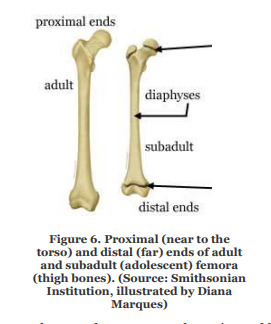
Most archaeologists and forensic anthropologists will answer that the pelvic girdle is the best indicator for identifying an individual's age. The pelvis girdle consists of three main bones: hip bone (ilium, ischium, pubis), sacrum and the coccyx. With this, we look at the level of maturity of bone growth to make an educated guess. This can be identified by the bone's state of fusion. Depending on the identification of the individual, the pubis may fuse or grow robust. If the femur is present with the pelvis girdle, then the collected data becomes stronger. The femur is measured in height from the neck to the head, then the shaft alone to provide an idea of one's stature. All of these together create a plausible stature for one's growth and maturity.

The mandible is touch-and-go. I’ve shared in the past that teeth can provide an idea of an individual’s weight, social/economic status, stature, left/right dominance, and types of bite when chewing food. The state in which teeth grow in can give us an indication of age. This is just as good as observing one's age with a pelvis girdle. If not, maybe a bit better! However, this only works if there's a certain amount of teeth present and a record of growth is present. We look at an individual’s molars and premolars in order to determine a rough estimate in age. On average, wisdom teeth come in between the ages of 17 to 25 (Renton et al., 2016). Some are late bloomers, others are early birds. X-Rays can help us identify where the teeth are currently and provide a projection of when they'll appear. As long as there is recorded data on how teeth grow and when they come in, it's easy to determine how old someone is.
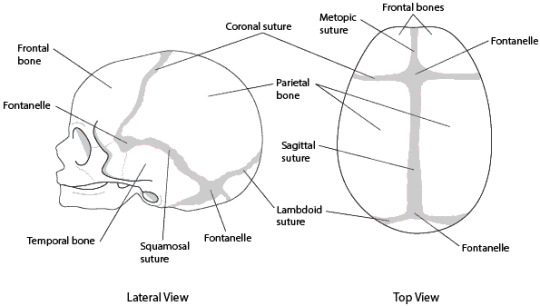
Finally, we have the calvaria. For the sake of sanity, I will be referring to this as the “cranial cap." This is the top crown of the head with four major bones that shapes the skull. These bones feature the frontal bone, two parietal bones, and one occipital bone. Along the top of the cranial cap we see these squiggles that separate the bones. These are called “sutures.” Sutures can be defined or barely visible due to the state of mend. Through maturity, these bones mend together to create one bone rather than four. These are not signs of damage done to the head, these are signs that show the state in which a child is growing (Warren et Al., 2012). Sutures are a result of an infant's cranial cap fusing together after being birthed. To put simply; the less defined they are, the older that one supposedly is.
OBSERVATION:
As explained in the “Methods,” section, the cranial cap and mandible appear to be a more logical choice when determining Sonic’s age. I am fortunate for the small crumbs given to me from Sonic CD (1994) and Sonic Unleashed (2008). Both of these provide a good picture of Sonic’s biological estimation on age range. I will not be referring to Evan Stanley’s interpretation of his skull. I do not feel that this is necessary, nor canon. This is Ms. Stanley’s interpretation of Sonic anatomy and fan art.
Mandible


Right before it's initial release, Sonic Unleashed's opening cinematic was meant to have a darker tone. Initially, the beta version of the scene depicted Sonic being electrocuted in his super form as he's infused with Dark Gaia energy. This scene was also meant to show his skeleton during the painful transformation. Screenshots of the scene are available online. One particular shot shows enough of Sonic's mandible to identify canine, incisor, premolars, and molars. The image above shows that at least ONE wisdom tooth (third molar) is present. Other signs of third molars is not visible due to angle of shot.
In the animated short titled "Night of the Werehog," we're given a good shot of Sonic opening his mouth and showing his fangs. Way in back are three molars (Image has been brightened and highlighted for view). Since one confirmed wisdom tooth is present in the shot, we could infer that Sonic is at least 17-years-old. Not fifteen. Seventeen is the average age for when we see wisdom teeth begin to grow in.
Cranial anatomy/Cranial Cap


In Sonic CD (1993), there is a particular scene where Sonic is electrocuted once again. [Fun Fact: one would not be able to see Sonic's skeleton if electrocuted, you'd see his nervous system instead.] Once again, players are able to see Sonic's entire skeletal system. The problem with this example is that it's pixelated art. Pixel art can range from being detailed works of art, or simplified icons that have symbolic meaning. The skeletal anatomy that we see of Sonic in the CD title is not enough for me to draw a conclusion on how old he is. It's merely a representation of a shock taking place.
For a better representation of a cranial cap, we should refer to the beta version of Sonic Unleashed once more. Sutures on Sonic's skull are a tad harder to make out in the image due to how saturated the scene is. A wonderful example of seeing Sonic's cranial suture can be seen at a side profile. The one closes to the sphenoid bone (eye socket) is a cranial suture. Again, this one is up for debate since the quality of the photo is poor. For the sake of sanity, we'll claim that this is a suture.
Examining the suture, we see that it's less defined. This does not mean that the sutures disappear completely. As we grow older, the bone fuses. If Sonic were younger, then the sutures would be more defined. Here, they've fused quite finely. This leads me to believe that he is out of the child phase (1yr to 12yrs) and into Adolescence (13yrs to 17yrs).
Femur & Pelvic Girdle/Pelvis

Generally, there's a model that can be used to display what a mature individual looks like compared to an adolescent when observing a pelvis girdle. Here, it's a bit harder for me to make an assumption because there's a lacking model of what adults and adolescents look like for anthropomorphic animals. This is a query that I've faced when trying to examine Sonic's skeletal anatomy. Of course, measuring a femur and weighing the density of bone could provide some insight on Sonic's estimated age (Shipman, 2018).
In a real world, that would require lots of money and an actual subject that is the equivalent to Sonic's height and weight (canonically, Sonic is 100cm tall and weighs 35kg). You'd then have to figure how much the bone density changes when someone stands up, sits down, lies down, and so forth. Plus, I don't know Sonic's level of body fat to even begin doing a simple calculation. It's a bit of a headache the more that this is tackled upon. That is a lot of data to collect for a talking blue hedgehog.
Measurements of the femur to the pelvis are fine and dandy, but the data is inconclusive. A simple measurement could be off by a single year or three. Once more, it's kind of hard to capture a crisp picture of the pelvis girdle and femur. I feel that gathering data from this perspective is inconclusive.
Discussion:

I must stress that this isn’t meant to be as in-depth or taken seriously. I must also stress that many social groups around the world have different approaches and cultural definitions to what it means to be a teenager. This is a common topic that I try to educate people about when it comes to cultural norms and social practices. Most western cultures consider that teenagers starting at 13yrs of age and ending at 17yrs of age before becoming a legal adult at 18yrs. Some western cultures even extend the age gap to 13yrs to 19yrs. Cultural and social teachings of how we define what is and isn’t a teenager could easily be defined as “adolescence.” We refer to this as adolescence, it allows us to have an extended age gap of 13yrs to 19yrs (Ember et Al., 2017). It all narrows down to how these practices and beliefs are taught within one’s community.
Some fans headcanon Sonic and his friends are growing older, others younger… or even stick with the Western interpretation of him being 15-years-old. Sonic's age has always been ambiguous, meaning that it's not narrowed down to a specific number. The query that I've faced is that there is a lack of official material that displays this easily. The information that I have shared in this post works on a plausible theory that he's older than 15. However, gaming manuals have almost always made it a point hat hes 15/16 (Sonic Heroes Game Manual, 2003). The point now is that he's a teenager. He will always be viewed as a teenager in this canon. To me, Game!Sonic is definitely older. He clearly shows characteristics of being an older version of himself (the strongest supporting evidence here being his teeth), but still within the range of being classified as a "teenager."
My goal here is to not enforce one way of thinking. The most that I can do is supply the data and leave you, the reader, to make your own conclusions. I hope that this answers your question, my dear.
#I’ve been… so scared to answer this. I am very conscious of this being a hot/controversial topic as of late. Please don’t cancel me👉🥺👈#mystery anon#off topic#I am an anthropologist#I am an archaeologist#sonic#sonic the hedgehog#sonic movie#sonic unleashed#trigger warning: skull#tw: skull#tw skull
61 notes
·
View notes
Text
10 years of a PhD
August 2023 marks ten years since I was awarded a PhD in Linguistics. I submitted the thesis for examination in February 2013, it was examined by around May, and the final version with corrections done by some time in the middle of the year. August is when I dressed up and the degree was conferred, so that's the date on the testamur that now hangs in my office. The weirdest thing about this decade is that it means I've spent longer having a PhD than doing something that was such an important time in my life. My work has continued to grow from, but still draw on, my thesis research. I have been working with speakers of Syuba as well as Lamjung Yolmo, to continue to document this language family. I've moved from a focus on evidentiality to look at reported speech, discourse and gesture. These all still require an approach that looks at both grammatical structures and how people use them, directly continuing the kind of approach I took in my PhD. I'm particularly proud of the gesture work, as this is a return to an older interest. I didn't publish my PhD as a single monograph, but turned it into a number of revised and refined papers. I publishing the descriptive grammar as a book, which was an expanded version of a slightly absurd 30k word appendix to the thesis. Below is a list of those publications, as you can see it took me quite a few years to find homes for all of this work. I've also been lucky to take my research in other directions too; my gesture work has expanded into emoji and emblems, and I've also been writing about the data management and lingcomm work I've been doing. This work has increasingly been happening with collaborators, I love how much better work becomes when people talk each other into do their best thinking. I know I'm very fortunate to still be researching and teaching a decade after graduating, and that I have an ongoing job that lets me plan for the next decade. The thesis work informed a lot of my research, but these are the publications taken directly from the thesis:
Gawne, L. 2016. A sketch grammar of Lamjung Yolmo. Asia-Pacific Linguistics. [PDF] [blog summary]
Gawne, L. Looks like a duck, quacks like a hand: Tools for eliciting evidential and epistemic distinctions, with examples from Lamjung Yolmo (Tibetic, Nepal). 2020. Folia Linguistica, 54(2): 343-369. [Open access version][published version][blog summary]
Gawne, L. Questions and answers in Lamjung Yolmo Questions and answers in Lamjung Yolmo. 2016. Journal of Pragmatics 101: 31-53. [abstract] [blog summary]
Gawne, L. 2015. The reported speech evidential particle in Lamjung Yolmo. Linguistics of the Tibeto-Burman Area, 38(2): 292-318. [abstract][pre-publication PDF]
Evidentiality in Lamjung Yolmo. 2014. Journal of the South East Asian Linguistics Society, 7: 76-96. [Open Access PDF]
A list of all publications is available on my website: https://laurengawne.com/publications/
93 notes
·
View notes
Text
。・゚゚・ Socstudies: Sociology 101 ・゚゚・。

101: What do sociologists study?
Hello! Welcome to my first sociology class! Read along and answer the questions to earn Luke's coffee cups, which you can exchange at the store for rewards!
.⋆。⋆☂˚。⋆。˚☽˚。⋆..⋆。⋆☂˚。⋆。˚☽˚。⋆..⋆。⋆☂˚。⋆。˚☽˚。⋆..⋆。⋆☂˚。
To start of with, we need to answer the question:
。・゚゚・What is sociology?・゚゚・。
Sociology is the study of social structures and relationships - to put it simply, sociologists study how people interact with each other and how this changes such as in groups of families, colleagues, etc.
1x Luke's coffee cup earnt for making it this far!
。・゚゚・Okay, so what do sociologists actually do?・゚゚・。
In order to study social relations, sociologists will focus on a specific area such as families, education, or work. From this, they will then zoom in on a specific subject. For example, my area of interest is globalisation, and how the internet has changed the way in which people interact.
Once they have an area that they are interested in, they may conduct primary or secondary research - or both. Primary research involves going out (or going online) and using methods such as surveys, participant observation, interviews, and lab or field experiments. Secondary research involves the analysis of results or data that already exists - such as ordinance or census data.
1x Luke's coffee cup earnt for making it this far!
。・゚゚・What do they do with this data?・゚゚・。
After data is collected, it is analysed and written up. There are many different theoretical lenses through which the data is analysed, and I will discuss these in more detail in future lessons (see the syllabus).
1x Luke's coffee cup earnt for making it this far!
。・゚゚・is sociology important?・゚゚・。
Sociology is important because the research is often carried out in a way that puts the attention on previously underepresented groups that are ignored or belittled. For example, Alice Goffman's ethnography 'On the Run' involved her living with the group she was observing (young Black men and their families in an over-policed Philadelphia neighbourhood) for six years. From this, she was able to relate their lives through theological lenses to draw attention to the issues that they were facing.
1x Luke's coffee cup earnt for making it this far!
.⋆。⋆☂˚。⋆。˚☽˚。⋆..⋆。⋆☂˚。⋆。˚☽˚。⋆..⋆。⋆☂˚。⋆。˚☽˚。⋆..⋆。⋆☂˚。
。・゚゚・Review Questions!・゚゚・。
1x cup for each answered correctly!
What is the definition of sociology?
What are the two types of research methods that sociolgists can use? Name one of each type.
Outline one reason why sociology is important.
Congratulations for finishing your first lesson at Chilton! Head back to Stars Hollow and trade your coffee cups here!
#sociology#sociology studyblr#gilmore girls#gimore girls studyspo#study game#lukes diner#sociology student#sociology study with me#study with me#studyspo#study motivation#study like rory gilmore#study like granger#study motivator#study accountability#studying#study blog#gilmore studyblr#studytracker#100 days of productivity
38 notes
·
View notes
Text
WIP - ‘Kestrel Kestrel’
So apparently “WIP Wednesday” is a thing? Like I need any excuses to dump incomplete ficbits on the internet.
----
Still feeling sore and muzzy, with 55 lurking quietly next to her, monitoring her vital signs, she’d only been human again for thirty seven minutes but Kate was already on her third plate of sandwiches, crunching her way through Spacehawk’s entire stock of crispy snacks. 101 looked alarmed by how quickly his inventory was dropping but wasn’t hesitating at bringing more when she looked at him in a specific way.
“Growing a whole new skeleton really takes it out of you,” she said, accepting the offering when the zeroid trundled over pushing yet another packet of crisps towards her.
“That’s our last pack of those,” 101 informed her, trying but not quite able to keep all the reproach from his tone. “So if you need anything else you’ll need to pick something different. Like broccoli.”
“Sorry, hon.” She suspected it had probably been Hiro’s favourites she’d been happily munching her way through, if the zeroid’s manner was anything to go by. “I’ll send some more up on your next supply run.”
He chirped an acknowledgement and seemed mollified, for the moment.
“I guess it must have felt a bit like this when you got your body back after Zelda turned you into a cube, huh?” she wondered.
��Oh I don’t think my experience was anywhere near as bad as yours, ma’am,” he demurred. “Mine was more like… maybe just a very unflattering new set of clothes.”
Kate patted him on the head, anyway. “I bet it still sucked. And at least you weren’t a were-cube,” she joked, and winced.
“And it didn’t involve a trash compactor,” he agreed, and gave her fingers a bump. “Would you like a coffee? I just heard it finish brewing.”
“That would be amazing. Thank you.”
He squeaked another little nonverbal agreement, and rolled away to get it. (She wondered if she could get away with asking for more sandwiches when he came back.)
“Tea? Oh, yes please,” she heard Hiro say, and looked up to find the lieutenant in the doorway.
“I ate all your chips, so I think I’m in trouble with your little space husband,” Kate apologised, holding the open pack out to him. Even that small action made her shoulders ache. Perhaps she ought to forego more sandwiches in favour of sleeping for a few days.
Hiro smiled and took a single crisp, but otherwise waved her off. “I once told him I particularly liked these, so now he always buys far too many, then pretends they were on offer. Then we have to somehow store four cases of them.” He settled on the floor next to her, cross legged, and nibbled the snack. “I try not to eat them too quickly, because then he panics that we are running out and buys more.” A little sigh. “There are certain nuances to human behaviour that zeroids don’t quite get, yet, and striking a balance between foods we enjoy and sensible nutritional choices appears to be one of them.”
“Well, you have plenty of ‘sensible nutritional choices’ in the form of broccoli, apparently.”
“And why do you think we have plenty of that?” Hiro gave her an arch look, then relented and took another crisp.
“Yeah, I get it.” Kate chuckled, tiredly. “So do you have an update for me?”
“I do. Not much of one, yet, but we wanted to ensure you were kept in the loop.” He held out the tablet for her.
Kate stared at the confusing mosaic of… biopsy images? “What am I looking at?”
He tapped the first image and it enlarged to a graphical representation genetic data. “Initially, when you arrived and we took a skin sample?” At her nod, he went on; “We thought that Zelda must have done something structurally to alter your DNA, but when we analysed it, it was all still human. We could not explain it. How could you be human, but categorically not human, at the same time? So we did a visual scan of your blood sample, instead. And we found… this.” He touched the screen and brought up a new image.
It was some sort of microscopy of a blood film. Kate could recognise red blood cells easily. The irregular, blobby purplish masses were probably white blood cells.
She had no idea what the scattering of angular black flecks were, though.
She felt a set of cold fingers draw up the back of her neck. “The hell are those.”
“We are still working on our analysis, but they look like very small machines of some sort. They have proved hard to extract to get under the electron microscope. Kiljoy is still working on it.”
---
“The black dots.” She let out a breath in a very long exhale. “Can you remove them?”
Hiro’s silence was all she needed to know.
“We will remove them,” he hastily added. “I just don’t know how quickly we can do it, yet.”
“Can you block them?”
“I don’t know.”
“So what you mean is, I could turn back into a bird at literally any moment. Including at the worst possible time. Like… at the controls of an aircraft.”
He took her hand and squeezed her fingers, briefly. “I’m sorry, Kate.”
The two zeroids had both converged on her as well, leaning comfortingly against her.
“It’s okay, guys.” She forced a smile. “I know it’s not your fault. I just… oh, man. Just when I thought it couldn’t get any worse.”
3 notes
·
View notes
Text
Gaza in Context: A Collaborative Teach-In Series: First Installment: Gaza 101
20 October 2023 1:00-2:30 PM EST / 10:00-11:30 AM PST LIVE ON: YOUTUBE.COM/JADALIYYA
Featuring: Ziad Abu-Rish, Fida Adely, Aslı Bali, Rana Barakat, Rochelle Davis, Beshara Doumani, Noura Erakat, Adel Iskandar, Maya Mikdashi, Sherene Seikaly, Lisa Wedeen
Moderated by: Bassam Haddad
“We are together experiencing a catastrophic unfolding of history as Gaza awaits a massive invasion of potentially genocidal proportions. This follows an incessant bombardment of a population increasingly bereft of the necessities of living in response to the Hamas attack in Israel on October 7.
The context within which this takes place includes a well-coordinated campaign of misinformation and the unearthing of a multitude of essentialist and reductionist discursive tropes that depict Palestinians as the culprits, despite a context of structural subjugation and Apartheid existence.
The co-organizers below are convening weekly teach-ins and conversations on a host of issues that introduce our common university communities, educators, researchers, and students to the history and present of Gaza, in context.
In this first teach-in session, we feature short introductions to the topic and foreshadow the conversations to come. We will also be screening clips from the documentary GAZA IN CONTEXT, which provides an analytical and data-driven background on Gaza.”
(text from event website)
3 notes
·
View notes
Text
Dot Net Training 101: From Novice to Ninja - Level Up Your Coding Skills Today!
Are you a coding enthusiast looking to enhance your skills in the dynamic world of software development? Look no further! In this article, we will take you on an exciting journey from being a novice to becoming a coding ninja through comprehensive Dot Net training. Whether you're a beginner or have some programming experience, this guide will equip you with the knowledge and tools necessary to thrive in the field of IT.
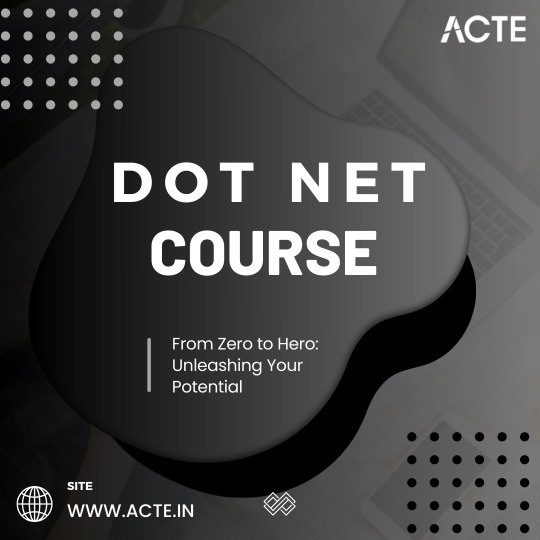
Why Dot Net Training?
Bridging the Gap between Education and Industry Demands
One of the primary reasons to pursue Dot Net training is its high demand in the IT industry. With technological advancements progressing at an unprecedented pace, employers seek professionals well-versed in Dot Net technologies to meet their business needs. By acquiring Dot Net skills, you'll equip yourself with a valuable asset that can open doors to rewarding job opportunities.
Exploring the Versatility of Dot Net
Dot Net, a powerful framework developed by Microsoft, offers a wide range of tools and functionalities. From web development to desktop applications, mobile apps to cloud solutions, Dot Net empowers developers to craft robust and scalable software solutions. Through training, you'll gain the ability to leverage the versatility of Dot Net across various domains, expanding your horizons in the IT field.
Continuous Learning and Skill Growth
In the ever-evolving landscape of technology, it's crucial to stay up-to-date with the latest trends and advancements. Dot Net training provides an opportunity for continuous learning, allowing you to sharpen your coding skills and stay ahead in the competitive market. With regular updates and new features being added to the framework, embracing Dot Net training ensures that you're constantly equipped with the knowledge required to succeed.
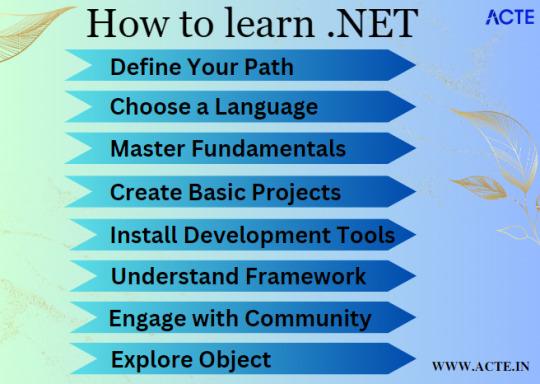
Getting Started: Foundations of Dot Net
Understanding the Dot Net Framework
Before diving into the intricacies of Dot Net programming, it's essential to grasp the foundation of the Dot Net framework. Dot Net encompasses a collection of programming languages, libraries, and tools that provide a highly flexible and efficient environment for developing software applications. It simplifies the development process and enhances productivity by offering a unified platform to build, deploy, and run applications.
Mastering the C# Programming Language
C# (pronounced as "C sharp") is the primary programming language used in Dot Net development. Familiarizing yourself with C# is crucial for becoming a proficient Dot Net developer. C# combines the power of simplicity and versatility, making it an ideal language for developing various types of applications. Through structured learning and practice, you'll become adept at writing clean, efficient, and maintainable code using C#.
Navigating the Dot Net Ecosystem
To become a skilled Dot Net developer, you need to explore the vast ecosystem surrounding the framework. Discovering popular development environments like Visual Studio and Visual Studio Code can significantly enhance your productivity. Additionally, becoming well-versed in various Dot Net libraries and frameworks, such as ASP.NET for web development or Xamarin for cross-platform mobile development, opens doors to diverse career opportunities.
Leveling Up: Advanced Dot Net Concepts
Unlocking the Power of Object-Oriented Programming (OOP)
Mastering object-oriented programming is an essential milestone on your journey to becoming a Dot Net ninja. OOP helps in building modular, reusable, and structured code by organizing data and behavior into objects. Understanding and implementing OOP principles, such as encapsulation, inheritance, and polymorphism, will enable you to design scalable and maintainable software solutions.
Embracing Agile Development and Continuous Integration
In the fast-paced world of software development, it's crucial to adopt agile methodologies and embrace continuous integration. Agile practices ensure efficient collaboration, adaptability, and faster delivery of high-quality software. By familiarizing yourself with agile methodologies like Scrum or Kanban and incorporating continuous integration tools like Azure DevOps or Jenkins, you'll become an efficient and valued member of any development team.
Exploring Advanced Dot Net Technologies
As your Dot Net journey progresses, it's important to explore advanced technologies within the framework. Dive into topics such as ASP.NET Core for building modern web applications, WPF for creating rich desktop experiences, or Entity Framework for seamless database integration. By expanding your knowledge in these areas, you'll gain a competitive edge and the ability to tackle complex
By embarking on this path, you've taken the first step towards enhancing your coding skills and becoming a Dot Net ninja with ACTE Technologies. Keep in mind that practise and ongoing learning are the keys to success. Stay curious, embrace new technologies, and never stop leveling up your coding skills.
5 notes
·
View notes
Text
getting into leftist politics (a guide)
Preface
When encountering unfamiliar concepts or ideas, whether they strike us as slightly curious or downright implausible, it's not particularly productive to outright believe or disbelieve them. Neither one means knowing for certain. It is much better to approach anything in life with the exact opposite of belief and disbelief: open-minded skepticism.
In so doing, it’s essential to always be both open-minded and skeptical at the same time.
If we’re not open-minded, we’re unlikely to ever learn anything new – we believe we already know everything.
If we’re not skeptical, on the other hand, we may believe anything – that’s being gullible.
Being open-minded means trying to gather as much data as possible in support of the idea, without any bias or filters. Being skeptical, in turn, means critically assessing the validity of these data and looking for any facts to the contrary. Having done both, we must draw the right conclusions and make our model fit the data, not cherry-pick the data that match our existing views and preconceived ideas.
Introduction
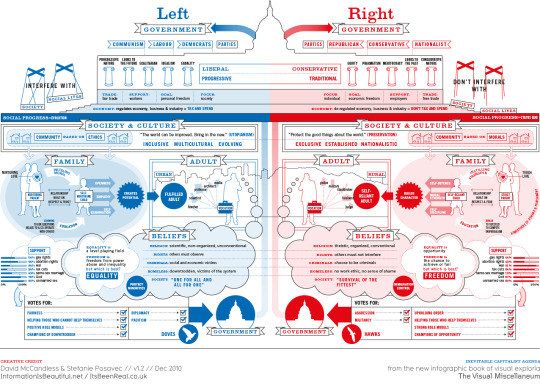
First of all, the really basics of just politics in general. I'd ask either a lecturer or first-year student in your university's PoliSci department for the booklist for their 101 course. Those are curated to include the most significant works and perspectives on the topic, while remaining approachable for a beginner.
There are also these books that I read that go through each political concept. One of them is a bit shorter;
30-Second Politics: The 50 most thought-provoking ideas in politics, each explained in half a minute PDF ( Free | 209 Pages )
One of them is a bit longer;
The Politics Book - PDF Drive
Vaush, regardless of what you think of the guy, has two politics 101 videos where he basically explain different concepts and terms. I'd give those a watch.
his 101 video
his 102 video
Also, TvTropes has pages that are surprisingly in detail.
Political Ideologies / Useful Notes - TV Tropes
If you haven't taken a political compass test, you can do that after all this here.
I find political compasses to be kinda flawed but still somewhat useful for understanding political ideas. Most compasses are made from either a right-libertarian or centrist liberal perspective, and they pay little mind to organizational structures – the Right is just always laissez-faire capitalism, the Left is just always government regulation within capitalist parameters. They’re also too focused on issue-of-the-day stuff a lot of the time.
The divide is better understood as broad social equality versus hierarchy, classlessness versus class division, and democratic control versus autocratic control of the social infrastructure. You can talk all you want about freedom in the bottom right quadrant, but at the end of the day you still have unaccountable autocrats making all the major economic decisions because they control the workplaces, the housing, and the utility sources. The two bottom quadrants are decentralized versions of democracy and autocracy, and the top two quadrants are centralized versions.
Society’s shape is ultimately a more important question than whether or not you want weed legalized. Who holds power? How is the infrastructure organized? Are you using one top-down institution to try and fix other top-down institutions?
But the political compass might at least give you a good estimation of where you are, at least which quadrant. And each quadrant has related books that are recommended on the site to read.
politicalcompass.org/relatedBooks
https://politicalcompass.org/authRightBooks
https://politicalcompass.org/libRightBooks
https://politicalcompass.org/authLeftBooks
https://politicalcompass.org/libLeftBooks
Now, I identify as a leftist (as far down left libertarian you can, personally). So, now that we've covered the basics of politics, let's delve into the heart of leftist political views.
These days, there's a considerable presence of left-leaning individuals on the internet. Occasionally, we discover that someone we assumed was a fellow leftist (like Ana Kasparian recently) is not actually aligned with those beliefs and is surprisingly comfortable echoing far-right rhetoric.
What's noteworthy is that some of these individuals, despite appearing to advocate for social justice and marginalized groups, primarily react to the controversial actions of the right. It's understandable, but this approach doesn't effectively communicate their own political stance. Opposing the genocide of trans people or any form of injustice in the U.S. doesn't automatically classify one as a leftist; it simply means you're a decent person.
So, what actually defines a leftist?
For me, it is anti-capitalism. That is the commitment that's hard to retract. Once you grasp the mechanics of capitalism, once you fully understand the exploitation it's built upon and the inherent conflicting interests between the working class and the ruling class, there's no turning back. You can't wake up one day and think, "You know what? Workers shouldn't own the means of production."
This distinction is at the core of what sets apart liberals and leftists. Liberals still endorse capitalism. They might be genuinely kind individuals deeply involved in progressive causes, yet at best, they're unaware and hold onto the misconception that capitalism is just the natural order.
Determining if someone is an anticapitalist can be tricky, though. Opposing the rise of fascism, ecological degradation, trans violence, police misconduct, and so forth doesn't automatically make you an anticapitalist. It makes you a decent person.
It's also normal to feel perplexed, considering how terms like "left," "socialism," "anarchy," and "communism" are often thrown around inaccurately. And let's not forget the buzzword barrage from the right. Therefore, being a leftist implies delving at least a bit into theoretical understanding. This helps clarify that places like Scandinavia aren't truly socialist since workers don't control the means of production. Figures like Bernie Sanders represent nicer liberals, in his case, social democrats who advocate for a mixed economy. Actual leftist political parties across Europe and North America don't really exist.
Being a leftist might mean aligning with various schools of thought like Marxism, socialism, communism, anarchism, or syndicalism, or a blend of these ideologies, or perhaps none at all. Yet, at its core, it signifies opposing capitalism and recognizing it as the root cause behind the interconnected web of contemporary issues—ranging from racism and climate crises to income disparity, fascism, war, and even figures like Elon Musk. It's all intertwined. It's systemic.
Breadtube
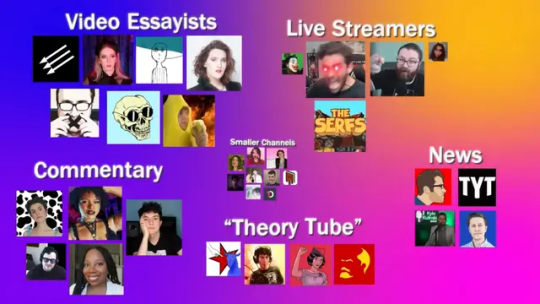
BreadTube, or LeftTube, is a loose and informal group of online content creators who create video content, including video essays and livestreams, from socialist, social democratic, communist, anarchist, and other left-wing perspectives. The channels often serve as introductions to left-wing politics for young viewers.
The term BreadTube comes from Peter Kropotkin's The Conquest of Bread, a book explaining how to achieve anarcho-communism and how an anarcho-communist society would function.
Noah Samsen actually made two videos about all the channels you can check out, so I will simply link those here and here.
Personally? I don't want to influence too much on the channels I like and don't like, but Second Thought is a good start. There are a lot of things I disagree on with the channel, but it's a good start to leftist ideas without going full communism.
Second Thought
Beau of the Fifth Column is really good. He's active on what's happening in the world and posts videos every day. They tend to be short and basic overviews but I practically never disagree with him. I kinda use him like a news source lol.
Beau of the Fifth Column
Then there's all the twitch/youtube streamers out there. They're a bit too online for me, but still got great stuff when they choose to focus on that. Vaush is a divisve figure in the community, but I quite like him. He's a bit edgy (tho less so nowadays), but I think that fulfills a necessary niche in the online left. He's probably the best debater we have on the left if we don't count Sam Seder, and he has a lot of strong videos breaking down specific issues. Got a lot of pro trans rethoric from him. Pick and choose from his content.
Vaush
Kyle is also good.
Secular Talk
I'll also say that economist Richard Wolff has stuff on youtube and he's great. He condenses Marxist ideas of exploitation, alienation, and the labor theory of value into easily-digestible video lectures, which is nice for when you’re multi-tasking. Here’s Part 1 of his four-week course on Marxian economics, and the other three parts follow in the playlist on Youtube.
Reading
Lighter books that are great for newbies include Socialism…Seriously by Danny Katch.
Why Marx Was Right by Terry Eagleton is also good.
Both of these guys have very breezy and interesting writing styles that include a wealth of information on leftist ideas and arguments, all alongside great senses of humor.
As for actual reading, there’s the leftist figureheads – Karl Marx, Rosa Luxemburg, Vladimir Lenin, Leon Trotsky, Emma Goldman, Peter Kropotkin, Mikhail Bakunin, Noam Chomsky, and plenty of others. There’s a wide range of ideas found in that list of people I named, so going through them and deciding for yourself which tendency you may fall into is important for any new and developing leftist.
Socialism
Communism
Anarchism
All of these three subreddits have reading lists in their wikis and side bars. I'd look into those depending on where you wanna start.
some final words
As for my personal politics, I've always been an anarchist, really. I just didn't know the word until later. I am neurodivergent, so I always questioned things. It kinda naturally led me down a non-conforming path. I would sometimes go to school in a dress, I have never liked the idea of exclusive relationships since I was a child (just didn't get them), I was out of the loop I felt. I've always been opposed to concentrated power in any form. I kinda vaguely labeled myself as a social democrat first, but then I learnt that capitalism and liberalism suck. But because state capitalism also sucks, as it doesn't liberate the working class either, I understood that libertarian socialism would be the way to go - not states owning the means of production and exploiting workers, but workers themselves owning the means of production. And I kinda quickly found the label anarchist that described everything I thought about social conventions and community structures since I was a toddler, and an anarcho-communist I became.
So, at it’s most basic, anarchism is an opposition to hierarchy, to one person having control over another. It is a radical commitment to compassion and absolute freedom. like communists, anarchists want a moneyless, stateless, and classless society. Unlike leninists, who falsely claim to be communists, we know that there has never been a good state, and never can be. They are by their very nature oppressive, and cannot be used as a means to an end to achieve communism. no group or individual can wield that much power over others and not become corrupted by it. Absolute power corrupts absolutely, etc. so while we are committed to the fight against capitalism, we are also committed to the fight against the state. they are intertwined and must be defeated simultaneously. so we believe in the abolition of all government and the organization of society on a voluntary, cooperative basis without recourse to force or compulsion, and the abolition of money and private property, as the best way to ensure the basic and higher needs of everyone are met.
If you are hungry, I will offer food. If you are thirsty, I will offer water. If you are cold, I will offer warmth. If you are in need, ask and I will give. If you are in trouble, ask and I will help I do not do these things in the hopes of being rewarded. I do not do these things out of fear of punishment. I do these things because I know them to be right. I set my own standards and I alone enforce them. I am very passionate about community over bureaucratic governments and corporations. I very much want de-radicalization and community cohesion. I vote but do not believe in electoralism. I like affecting change by building community networks. So, I try to move action into the real world to build small community networks and alternative power structures.
Therefore, personally, I think mutual aid is more important than reading theory. Like, there's enough strategy and history to read anyway. Looking at how our ideas actually work in reality is usually more helpful than reading someone else speculate on how they might work. But that's a post for another time.
My #1 recommendation is always Anarchy Works, if you wanted to know.
To end this, a final couple of resources.
Activist Databases and relevant Archive Collections
The Anarchist Library https://theanarchistlibrary.org/special
Solidarity! Revolutionary Center and Radical Library https://archive.org/details/solidarityrevolutionarycenter
The Gale Archive of Sexuality and Gender: http://www.gale.com/primary-sources/archives-of-sexuality-and-gender
ACTUP Oral History Project http://www.actuporalhistory.org/
Google Drives
Tevye Cowan Google drive with social justice related articles organized by topic: https://drive.google.com/drive/folders/0B1DQUsG9YxIXflhQejJqcmgwbzgtcjQzbFlFU3BNeVJES1JwTW9hRmEwa0k4dUNVZEJzQzg
Patty Clamarage Google drive with social justice related articles organized by topic: https://drive.google.com/drive/folders/0BzpUdTQcmjdhfmphVHFhd2tPYTlTbmJsMzA0eGdCZW8yQmdNSTlZUENTUEp5ZHA2RHVwejg
Non-activist sources
Electronic Library http://bookzz.org/
EBook Library http://en.bookfi.net/
2 notes
·
View notes
Text
Research 101: Last part
#Citing sources and the bibliography:
Citation has various functions: ■■ To acknowledge work by other researchers. ■■ To anchor your own text in the context of different disciplines. ■■ To substantiate your own claims; sources then function like arguments with verification.

Use Mendeley:
It has a number of advantages in comparison to other software packages: (1) it is free, (2) it is user-friendly, (3) you can create references by dragging a PDF file into the program (it automatically extracts the author, title, year, etc.), (4) you can create references by using a browser plug-in to click on a button on the page where you found an article, (5) you can share articles and reference lists with colleagues, and (6) it has a ‘web importer’ to add sources rapidly to your own list.
plagiarism – and occasionally even fraud – are sometimes detected, too. In such cases, appeals to ignorance (‘I didn’t know that it was plagiarism’) are rarely accepted as valid reasons for letting the perpetrator off the hook.
#Peer review
For an official peer review of a scholarly article, 3-4 experts are appointed by the journal to which the article has been submitted. These reviewers give anonymous feedback on the article. As a reviewer, based on your critical reading, you can make one of the following recommendations to the editor of the journal: ■■Publish as submitted. The article is good as it is and can be published (this hardly ever happens). ■■Publish after minor revisions. The article is good and worth publishing, but some aspects need to be improved before it can be printed. If the adjustments can be made easily (for example, a small amount of rewriting, formatting figures), these are considered minor revisions. ■■Publish after major revisions. The article is potentially worth publishing, but there are significant issues that need to be reconsidered. For example, setting up additional (control) experiments, using a new method to analyse the data, a thorough review of the theoretical framework (addition of important theories), and gathering new information (in an archive) to substantiate the argumentation. ■■Reject. The research is not interesting, it is not innovative, or it has been carried out/written up so badly that this cannot be redressed.
#Checklist for analysing a research article or paper 1 Relevance to the field (anchoring) a What is the goal of the research or paper? b To what extent has this goal been achieved? c What does the paper or research article add to knowledge in the field? d Are theories or data missing? To what extent is this a problem? 2 Methodology or approach a What approach has been used for the research? b Is this approach consistent with the aim of the research? c How objective or biased is this approach? d How well has the research been carried out? What are the methodological strengths and/or weaknesses? e Are the results valid and reliable? 3 Argumentation and use of evidence a Is there a clear description of the central problem, objective, or hypothesis? b What claims are made? c What evidence underlies the argument? d How valid and reliable is this evidence? e Is the argumentation clear and logical? f Are the conclusions justified? 4 Writing style and structure of the text a Is the style of the text suitable for the medium/audience? b Is the text structured clearly, so the reader can follow the writer’s line of argumentation? c Are the figures and tables displayed clearly?
#Presenting ur research:
A few things are always important, in any case, when it comes to guiding the audience through your story: ■■ Make a clear distinction between major and minor elements. What is the key theme of your story, and which details does your audience need in order to understand it? ■■ A clearly structured, coherent story. ■■ Good visual aids that represent the results visually. ■■ Good presentation skills.
TIPS ■■Find out everything about the audience that you’ll be presenting your story to, and look at how you can ensure that your presentation is relevant for them.
Ask yourself the following questions: •What kind of audience will you have (relationship with audience)? •What does the audience already know about your topic and how can you connect with this (knowledge of the audience)? •What tone or style should you adopt vis-à-vis the audience (style of address)? •What do you want the audience to take away from your presentation?
■■If you know there is going to be a round of questions, include some extra slides for after the conclusion. You can fill these extra slides with all kinds of detailed information that you didn’t have time for during the presentation. If you’re on top of your material, you’ll be able to anticipate which questions might come up. It comes over as very professional if you’re able to back up an answer to a question from the audience with an extra graph or table, for example.
■■Think about which slide will be shown on the screen as you’re answering questions at the end of your presentation. A slide with a question mark is not informative. It’s more useful for the audience if you end with a slide with the main message and possibly your contact details, so that people are able to contact you later. ■■Think beforehand about what you will do if you’re under time pressure. What could you say more succinctly or even omit altogether?
This has a number of implications for a PowerPoint presentation: ■■ Avoid distractions that take up cognitive space, such as irrelevant images, sounds, too much text/words on a slide, intense colours, distracting backgrounds, and different fonts. ■■ Small chunks of information are easier to understand and remember. This is the case for both the text on a slide and for illustrations, tables, and graphs. ■■ When you are talking to your audience, it is usually better to show a slide with a picture than a slide with a lot of text. What you should do: ■■ Ensure there is sufficient contrast between your text and the background. ■■ Ensure that all of the text is large enough (at least 20 pt). ■■ Use a sans-serif font; these are the easiest to read when enlarged. ■■ Make the text short and concise. Emphasize the most important concepts by putting them in bold or a different colour. ■■ Have the texts appear one by one on the slide, in sync with your story. This prevents the audience from ‘reading ahead’. ■■ Use arrows, circles, or other ways of showing which part of an illustration, table, or graph is important. You can also choose to fade out the rest of the image, or make a new table or graph showing only the relevant information.
A good presentation consists of a clear, substantive story, good visual aids, and effective presentation techniques.
Stand with both feet firmly on the ground.
Use your voice and hand gestures.
Make eye contact with all of your audience.
Add enough pauses/use punctuation.
Silences instead of fillers.
Think about your position relative to your audience and the screen.
Explaining figures and tables.
Keep your hands calm.
Creating a safe atmosphere
Do not take a position yourself. This limits the discussion, because it makes it trickier to give a dissenting opinion.
You can make notes on a whiteboard or blackboard, so that everyone can follow the key points.
Make sure that you give the audience enough time to respond.
Respond positively to every contribution to the discussion, even if it doesn’t cut any ice.
Ensure that your body language is open and that you rest your arms at your sides.
#Points to bear in mind when designing a poster
TIPS 1 Think about what your aim is: do you want to pitch a new plan, or do you want to get your audience interested in your research? 2 Explain what you’ve done/are going to do: focus on the problem that you’ve solved/want to solve, or the question that you’ve answered. Make it clear why it is important to solve this problem or answer this question. 3 Explain what makes your approach unique. 4 Involve your audience in the conversation by concluding with an open question. For example: how do you research…? Or, after a pitch for a method to tackle burnout among staff: how is burnout dealt with in your organization?
#women in stem#stem academia#study space#studyblr#100 days of productivity#research#programming#study motivation#study blog#studyspo#post grad life#grad student#graduate school#grad school#gradblr
15 notes
·
View notes
Text
Just because a graph isn't complete doesn't mean it is not connected. Data structures 101 baby
"I don't ship poly Scooby Gang because I hc Velma as a lesbian"
You small minded fool! Observe!
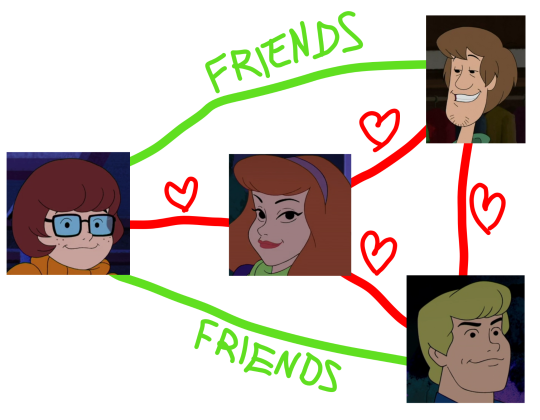
23K notes
·
View notes
Text
Master Data Governance Tools: The Backbone of Reliable Business Data
In today’s data-intensive environment, poor data quality is more than an inconvenience—it’s a liability. That’s where master data governance tools come into play. These tools serve as the foundation for maintaining consistency, accuracy, and trust across enterprise systems.
In PiLog’s What, Why & How of Data Governance 101, the importance of establishing a robust governance structure is made clear. These tools automate workflows, validate data, assign roles and responsibilities, and ensure compliance with internal and external standards.
When integrated properly, master data governance tools streamline operations, reduce risks, and improve data-driven decision-making.
0 notes
Text
Barcode Definitions 101 | Uses & Guide | AIDC INDIA – 2025
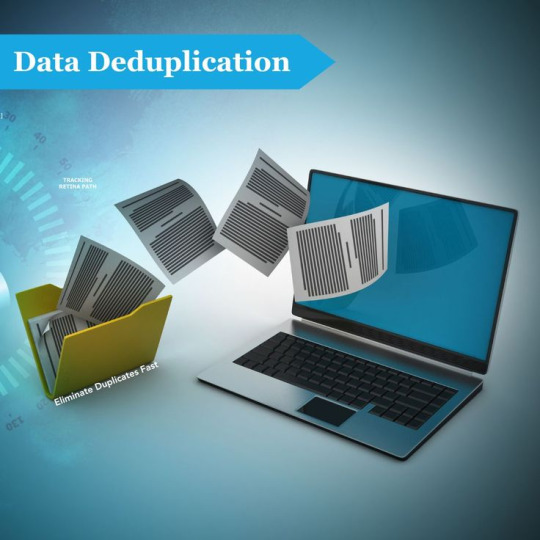
Barcodes play a vital role in today’s business environment. From retail checkout systems to inventory tracking, they have transformed the way data is collected and managed. As we step into 2025, it becomes more important to understand barcode definitions and their role in modern operations. This guide from AIDC Technologies India is designed to simplify everything you need to know about barcodes and their practical uses.
2. What Is a Barcode? A Simple Definition Explained
A barcode is a machine-readable code represented as numbers and parallel lines or squares. Barcode definitions explain how this code is structured and what type of data it holds. Barcodes typically encode product information like SKU, batch number, or manufacturing details. They are scanned using barcode readers, which instantly convert visual patterns into digital data.
3. Types of Barcodes Used in 2025
There are various types of barcodes in use, each with its own format and function. Barcode definitions help identify which format suits a particular industry or task:
1D Barcodes: These are linear barcodes like UPC, EAN, and Code 128, often used in retail and inventory.
2D Barcodes: These include QR codes and Data Matrix codes, used for storing more complex data.
PDF417: A stacked linear barcode used on IDs and transport documents.
Each format has a specific barcode definition and is designed to meet unique requirements based on space, readability, and data needs.
4. How Barcodes Work: From Scanning to Data Collection
The basic process begins with printing a barcode on a label or product. A barcode scanner reads the lines or squares, and decoding software extracts the stored information. Barcode definitions help determine what type of scanner and software are needed to read the code accurately. This simple process eliminates manual entry and ensures fast, reliable data capture across operations.
5. Key Uses of Barcodes in Modern Industries
Barcode definitions are foundational in a wide range of sectors. In retail, barcodes are used for pricing and checkout. In warehouses, they track stock movement and inventory levels. Healthcare uses barcodes for labeling medicine and managing patient records. Logistics companies depend on barcodes for real-time tracking of shipments. The correct use of barcode definitions ensures that the data captured is accurate and usable.
6. AIDC India’s Role in Barcode Solutions
AIDC Technologies India provides complete barcode systems—from labels and scanners to printers and integration software. Our deep understanding of barcode definitions allows us to recommend the right type of barcode solution for your specific industry. We support clients in retail, manufacturing, healthcare, education, and logistics with customized systems that improve data tracking and minimize errors.
7. Benefits of Using Barcodes in Business
Barcodes offer several benefits that go beyond just automation. Proper use of barcode definitions brings improvements in many business areas:
Speed: Barcodes speed up scanning and reduce checkout time.
Accuracy: Minimizes manual errors in data entry.
Inventory Control: Keeps track of stock movement in real time.
Cost Savings: Reduces labor and improves efficiency.
By applying the right barcode definitions, businesses can unlock these advantages more effectively.
8. Barcode Definitions vs QR Codes vs RFID
Understanding how barcode definitions compare to other technologies helps in selecting the best system. Barcodes are simpler and more cost-effective for small to medium-sized operations. QR codes, which are 2D barcodes, can store more data and are often used in mobile marketing or payment systems. RFID, which uses radio waves, allows item tracking without line-of-sight scanning. However, barcode systems remain more accessible and easier to implement.
9. Smart Barcode Scanning Solutions by AIDC India
AIDC India offers barcode scanning devices that are optimized to read all standard barcode definitions. Whether it’s a handheld scanner for retail or an industrial-grade scanner for warehouses, our devices ensure fast, accurate, and error-free data collection. We also provide software tools that integrate these scanners with your inventory or billing systems for seamless workflows.
10. Choosing the Right Barcode System for Your Business
Barcode definitions help businesses choose the right format, printing method, and scanning tools. AIDC India helps you evaluate your operational needs, the volume of data you need to encode, and the environment where scanning takes place. Based on these factors, we recommend and implement barcode systems that align with your goals.
11. Future of Barcodes: Trends to Watch in 2025
As we look ahead, barcode definitions are evolving with technology. Mobile barcode scanning is becoming more popular, especially in e-commerce and delivery services. Smart inventory systems are using AI to analyze barcode data for forecasting and planning. Environment-friendly printing solutions are also emerging. AIDC India stays updated with these trends to provide future-ready barcode solutions for businesses of all sizes.
12. Get Started with Barcode Solutions from AIDC India
Barcodes are a small but powerful part of your business infrastructure. With the right barcode definitions and tools, you can automate operations, reduce costs, and improve customer satisfaction. AIDC Technologies India offers everything you need—from barcode labels and printers to scanners and integration support.
Call to Action: Ready to streamline your operations with smart barcode solutions? Contact AIDC Technologies India today for a free consultation, customized recommendations, and reliable tools that match your business goals.
#BarcodeDefinitions2025#BarcodeGuide#BarcodeUses#AIDCIndiaBarcode#BarcodeTechnology#SmartTrackingSolutions#BarcodeBasics#InventoryManagement#BarcodeScanning#RetailTech2025
0 notes